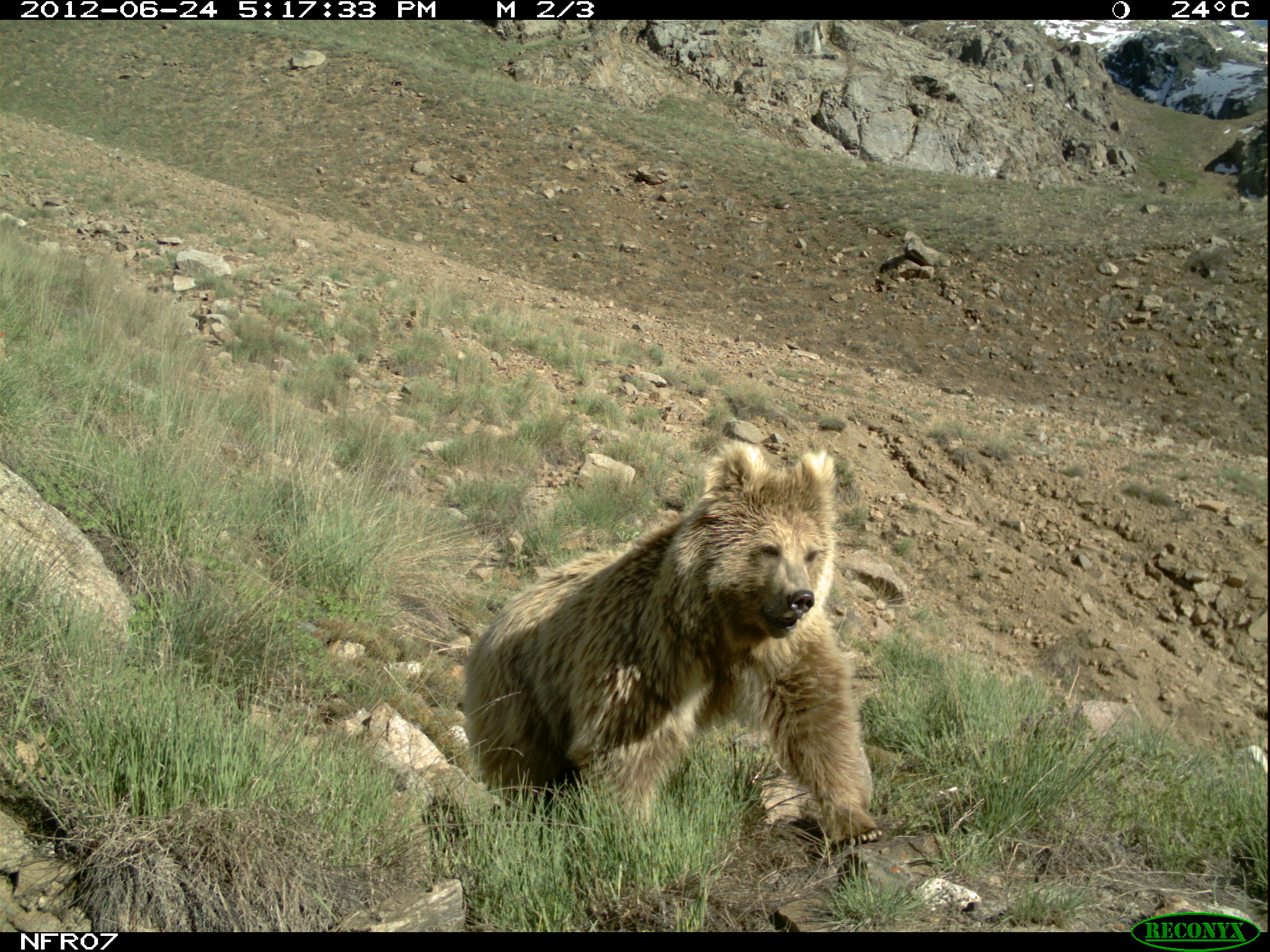The brown bear is the most well-known and widely distributed member of the bear family. The larger populations live primarily in Scandinavia, the Balkans, Eurasia, parts of Asia (Siberia) and North-America. The brown bear occupies a variety of habitats such as dense forests, mountainous areas and the tundra. See where they live in Europe.
Diet
The brown bear is an omnivore and feeds on a variety of vegetable products, like fruits, seaweed, grass, seeds, nuts, berries, roots and sprouts. They really like honey and other sweet foods. The brown bear also feeds on insects, fish, small mammals and carrion of bigger animals. In some areas the brown bear also hunts hoofed animals, like elk, reindeer and red deer.
Hibernation
Brown bears hibernate for a period of around 5 months each year. When winter approaches, they start looking for a den in a protected spot (an existing den or one that the bear digs especially).
Social behaviour
Brown bears are mostly solitary; they stick to their habitat and have their own territory. Territories can occasionally overlap. The territory of an adult male usually covers the territory of multiple females, and occasionally overlaps even the territory of other adult males. Although they are mostly solitary, brown bears will remain with their mate for a few weeks during mating season. The female will stay with her young until they are old enough to go their own way. Brown bears may gather at major food sources, for example during the salmon run.
Status
The European brown bear has already lost a large part of its original habitat. Other subspecies of the brown bear are often endangered. Worldwide the number of brown bears is estimated to be around 100,000. The IUCN-status of the brown bear is listed as ‘Least Concern’, although in some areas the brown bear population is considered ‘Vulnerable’.
Factsheet Brown Bear (Ursus arctos)


